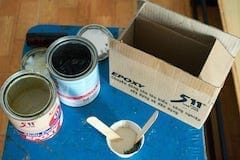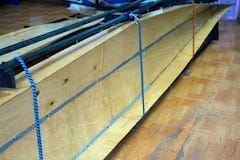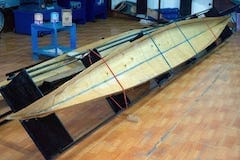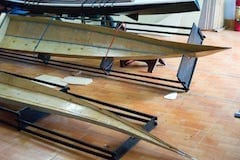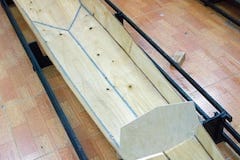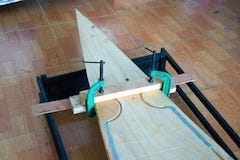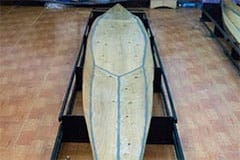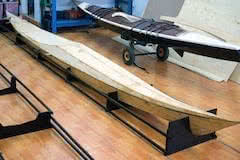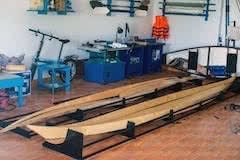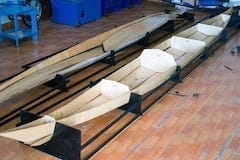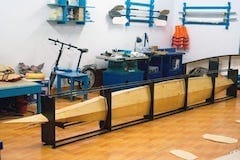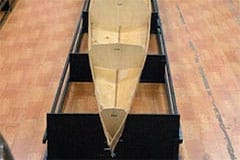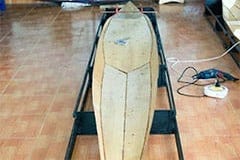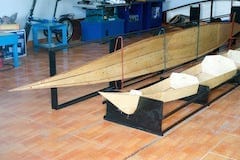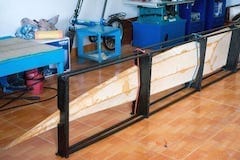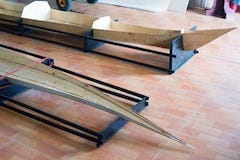 ontinue to work on the hatches… In my thinking, using the hasp locks is a nice way to hold down the hatches: secured and easy lock / unlock, tight fit, no hassle of lines or bungee cords. But still I have a little concern that those small metal parts could affect the operation of the magnetic compass, which would be mounted nearby. But most good modern compass nowadays should probably resist well to those small ferromagnetic interferences.
ontinue to work on the hatches… In my thinking, using the hasp locks is a nice way to hold down the hatches: secured and easy lock / unlock, tight fit, no hassle of lines or bungee cords. But still I have a little concern that those small metal parts could affect the operation of the magnetic compass, which would be mounted nearby. But most good modern compass nowadays should probably resist well to those small ferromagnetic interferences.
Initially, I intended to install three locks per hatch, but after some considerations, I installed four. With three locks, only one failure could easily let the hatch open, while with four, it would take at least two failed locks to make the hatch unsecured. It takes me a few hours to check fitting the hatches’ grooves, then using 3mm – diameter bolts to nail down all the parts (all is made of stainless steel). The result is quite pleasing: all hatches is tightly fitted and well secured.
Next, I make some slots to install the rigging. These are intended for some “heavy – duty” lashing used for the sail. The idea is simple, but it took me some times to figure out how it works: drilling two small holes near each other, then pull a short piece of plastic tube through those holes, then fill the inside with epoxy putty (the tube is waxed to prevent it sticking to the putty). When the epoxy cures, pull the tube out, that would leave behind a “tunnel” to push your lashing line through.
I make only four “anchor points” like this, as it require some “strong holdings” to rig the mast and sail. The other deck riggings, I would just use some screws, bolts and bungee cords. I would try to keep the deck rigging to minimum, no perimeter lines, as I don’t feel very comfortable with a cluttered deck with too much lines and cords and other hardwares, the sail plan would add a bunch of them in addition later on. Also, I don’t really want to punch too many holes through the hull anyhow.

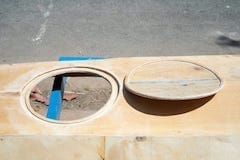
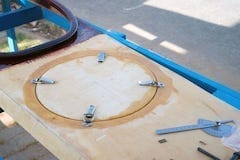
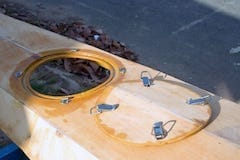
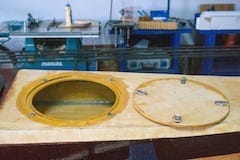
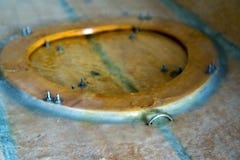
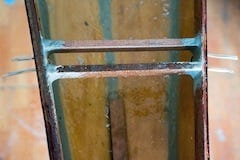
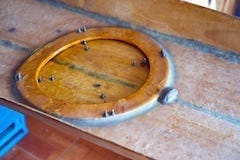
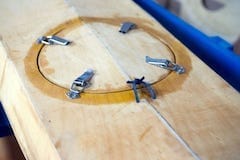
 roceed on making the aft and forward hatches. I’ve changed my mind to make those hatches as simple as possible: all will be flush – deck, rounded hatches hold down by some hasp locks. (The plan proposes making a twist – lock one for the aft hatch, but that would take considerable effort to get done right). Also, I’ve decided to move the forward hatch further aft, to get the deck space to install some sailing hardwares (compass, blocks, cleats…) later on.
roceed on making the aft and forward hatches. I’ve changed my mind to make those hatches as simple as possible: all will be flush – deck, rounded hatches hold down by some hasp locks. (The plan proposes making a twist – lock one for the aft hatch, but that would take considerable effort to get done right). Also, I’ve decided to move the forward hatch further aft, to get the deck space to install some sailing hardwares (compass, blocks, cleats…) later on.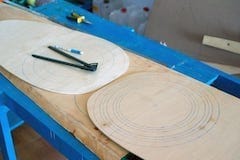
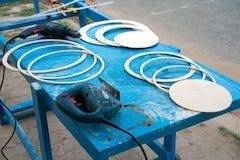
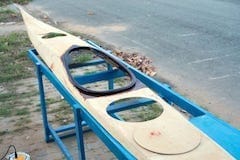
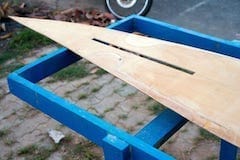
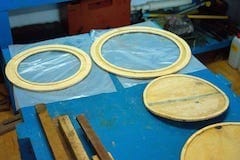
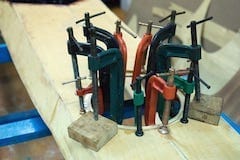
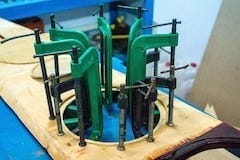
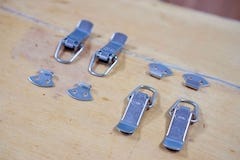
 inished most jobs needed on the hull part, next come the deck part, which has even more things to do. First is the cockpit’s coaming. With Hello World – 2, it was intended to be a river kayak, so I made the cockpit very spacious to allow a comfortable seat. A sea kayak has a much tighter cockpit, to prevent water pouring in, with the coaming to fit a spray skirt, the thigh braces, the cheek plates… It’s less comfortable, but it just has to be like that, a “keyhole cockpit”.
inished most jobs needed on the hull part, next come the deck part, which has even more things to do. First is the cockpit’s coaming. With Hello World – 2, it was intended to be a river kayak, so I made the cockpit very spacious to allow a comfortable seat. A sea kayak has a much tighter cockpit, to prevent water pouring in, with the coaming to fit a spray skirt, the thigh braces, the cheek plates… It’s less comfortable, but it just has to be like that, a “keyhole cockpit”.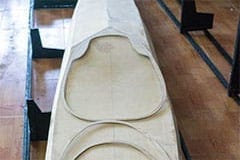
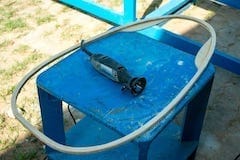
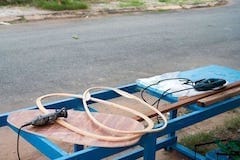
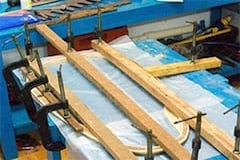
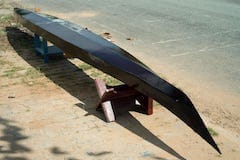
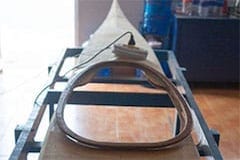
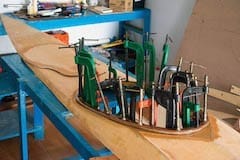
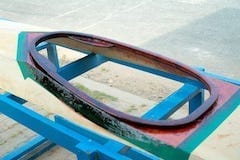
 ecided to try a new technique when glassing the hull’s external side. I add some color pigment into the epoxy used for glassing (and later, also to the transparent paint when painting the bottom). The pigment I used has a dark brown with a bit of reddish wooden shade. If this technique works, then the lower part of the boat will have a very deep brown and reddish, semi – opaque, lacquer like finish. And if the technique fails, I’ll paint the bottom in black.
ecided to try a new technique when glassing the hull’s external side. I add some color pigment into the epoxy used for glassing (and later, also to the transparent paint when painting the bottom). The pigment I used has a dark brown with a bit of reddish wooden shade. If this technique works, then the lower part of the boat will have a very deep brown and reddish, semi – opaque, lacquer like finish. And if the technique fails, I’ll paint the bottom in black.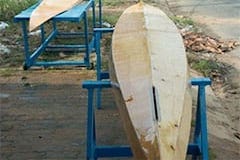
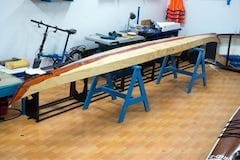
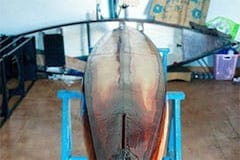
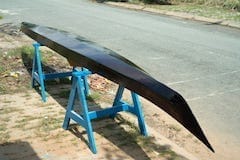
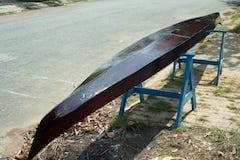
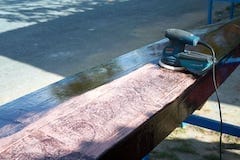
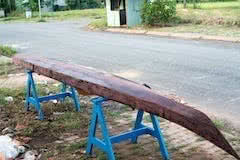
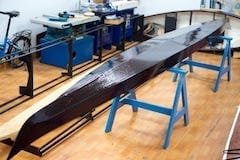
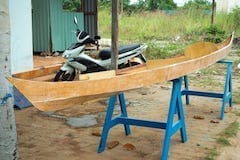
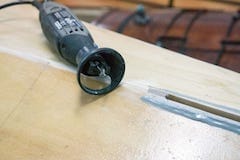
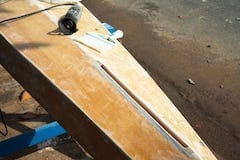
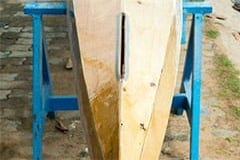
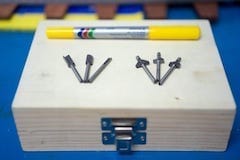
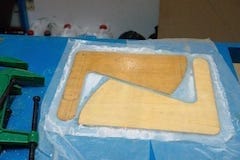
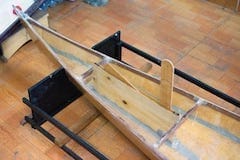
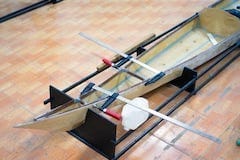
 ext comes in the skeg, a critical element of any serious kayak (you can go without a rudder, but better have a skeg for troublesome water and weather). The region I go paddling is extremely muddy, mud frequently gets into the skeg box and jams it, so I need a design that is as convenient for maintenance and repair as possible. After lots of thinking, I come up with the idea of an L – shaped skeg placed in a through hull, through deck well, controlled by a line and bungee cord.
ext comes in the skeg, a critical element of any serious kayak (you can go without a rudder, but better have a skeg for troublesome water and weather). The region I go paddling is extremely muddy, mud frequently gets into the skeg box and jams it, so I need a design that is as convenient for maintenance and repair as possible. After lots of thinking, I come up with the idea of an L – shaped skeg placed in a through hull, through deck well, controlled by a line and bungee cord.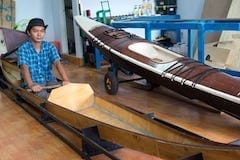
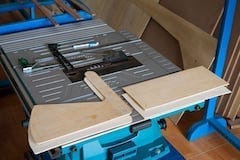
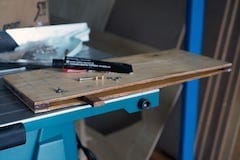
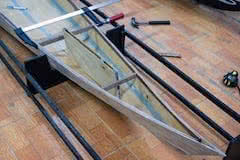
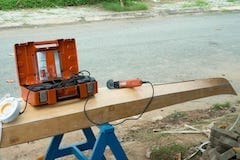
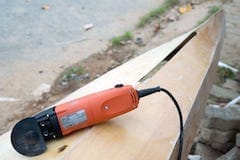
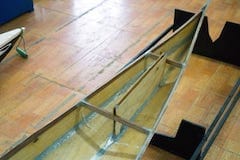
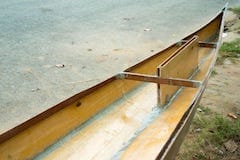
 efore installing the inwales, I expose the hull and deck into the afternoon tropical sunlight for a few days, for the epoxy to completely hardened. Noticed that for the currently used epoxy, it takes time (several days) for the “amine blush”, a wax like substance, to appear on the surface of the cured epoxy, like drops of dew. I need to wash & brush them with hot water & soap thoroughly, then giving it a slight sanding, then I would be able to install the inwales.
efore installing the inwales, I expose the hull and deck into the afternoon tropical sunlight for a few days, for the epoxy to completely hardened. Noticed that for the currently used epoxy, it takes time (several days) for the “amine blush”, a wax like substance, to appear on the surface of the cured epoxy, like drops of dew. I need to wash & brush them with hot water & soap thoroughly, then giving it a slight sanding, then I would be able to install the inwales.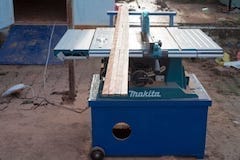
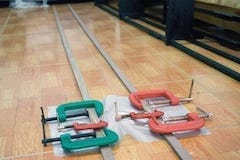
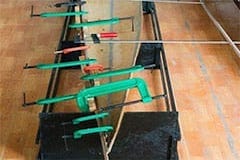
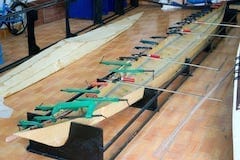
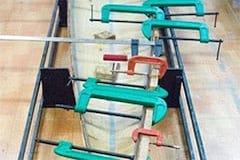
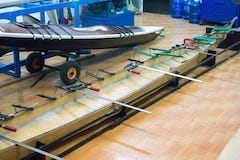
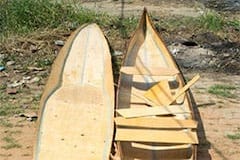
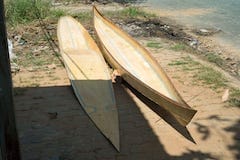
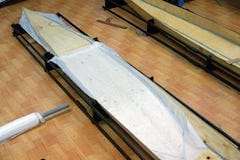
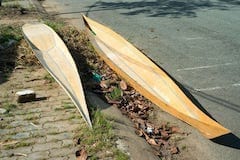
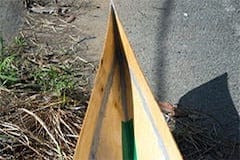
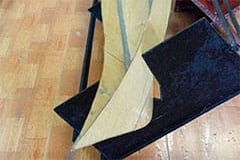
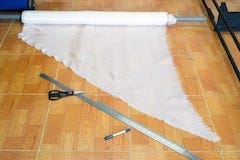
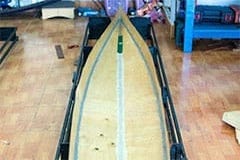
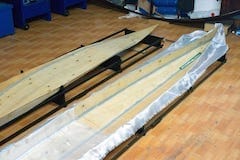
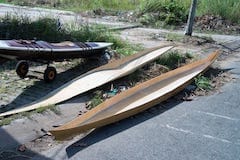
 he 511 putty comes in 2 parts: the resin and hardener, both premixed with a certain kind of thickening agent (filler), one has a dark gray and one has a yellowish color. Just stir them until you have a consistent light gray, highly viscous mixture. Since the hull and deck are tied to the framing boxes, I can easily slant the boxes to get the putty cured into the exact position, resulting into very clean seam lines. No need to use duct tapes to mask the lines though.
he 511 putty comes in 2 parts: the resin and hardener, both premixed with a certain kind of thickening agent (filler), one has a dark gray and one has a yellowish color. Just stir them until you have a consistent light gray, highly viscous mixture. Since the hull and deck are tied to the framing boxes, I can easily slant the boxes to get the putty cured into the exact position, resulting into very clean seam lines. No need to use duct tapes to mask the lines though.